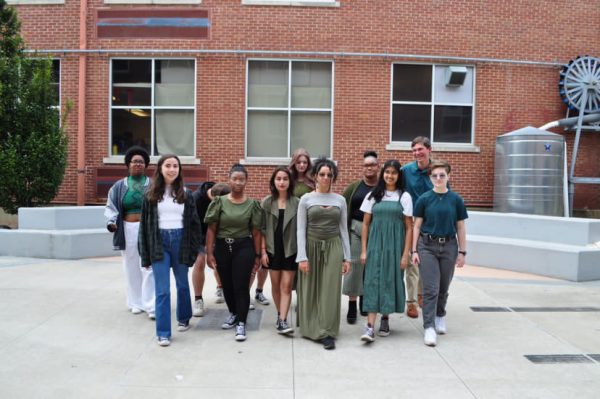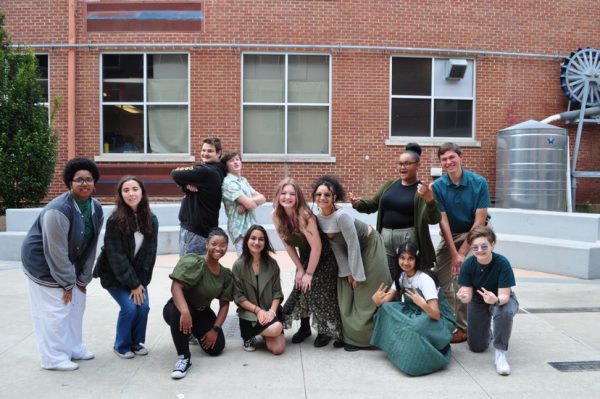In the secluded space of the choir room during seventh period, the voices of sopranos, altos, tenors and basses come together to create the sound of music. The collective vocalists sight-read and follow the music, skillfully singing under the direction of choir teachers Daniel Massey and Joseph Powell. This seventh period class is White Noise, White Station’s a cappella group.
“I think [a cappella] is slightly under-appreciated because people assume that singing is something that can be automatic,” Jennifer Guerrero (11) said. “They don’t realize the work that goes into learning a piece of music with a group and then putting that on stage.”
Although created around the 15th century, a cappella gained greater popularity during the 2000s and 2010s due to popular media such as “Pitch Perfect.” A cappella is choral singing without any musical instruments, often with soloists or vocal percussionists. Since its addition to White Station, a cappella has become a core part of the choir program with the soprano and alto group of Key of She and the tenor and bass group of Do Re He. The experience of both listening to and singing a cappella is different from what is experienced with the typical choir, making the skill of Key of She and Do Re He stand out.

“[Performing a cappella] can be really cool, but it can also be really stressful at times,” Siri Larsen (10) said. “[There is] kind of a lot of reliance on each other when it comes to singing the right pitches and having the right rhythms, but if you do it right, it sounds really, really good.”
Although Key of She and Do Re He have been separate groups for years, this year they have merged together. The new combined a cappella group consists of around 15 singers and incorporates all four main vocal ranges: soprano, alto, tenor, and bass. The main reason behind this change was the low number of tenors and basses auditioning for Do Re He.
“There were a lot of girls auditioning to be part of Key of She, but all of the guys graduated or couldn’t fit it in their schedule,” Anandi Durgam (11) said. “The only way that [Massey and Powell] saw to accommodate for this was to mesh our groups together.”
The news of a switch to one group came as a shock to many. Some returning members wondered how the two groups would be able to work in harmony, while others were intrigued to see how both groups singing as one would echo throughout the classroom.
“I was honestly a little excited [when finding out about the change],” Guerrero said. “[I] think … when it’s just treble voices it’s nice, but when you add tenors and basses it gives it this depth that really shakes you to your core when you’re listening to it.”
Once the switch to one group had become official, there was still an important question left: what would the new group’s name be? At the end of last year and beginning of this year, the group brainstormed new names that related both to music and to White Station.
“We spent, like, two weeks trying to figure out a name,” Larsen said. “We were trying to figure out things that were related to our school … and so we came up with White Noise.”

When the name was finally decided upon, the group took off. White Noise practices every day during 7th period and hones their singing skills. A cappella often focuses on contemporary and pop music, allowing the singers to emerge themselves in a new experience with every song. Due to the merging of Key of She and Do Re He, members of White Noise have the opportunity to become closer with each other.
“In chorale, because it’s such a large group of people and because you’re usually sitting with your section which is usually about fifteen people depending on what section you’re in, it’s harder to socialize with everybody,” Guerrero said. “In White Noise, it’s about 15 of us total so we can all socialize together and it’s a lot easier.”
Through group merges and name changes, White Noise has managed to become closer and blend their voices together. Though the future of White Noise is not entirely known yet, students are working through the change. A cappella, for many students, has allowed them to not only display their vocal range, but to find a home within the small choir room secluded in the basement.
“Even if you don’t know a whole lot about music or singing, you should still give [choir] a try anyway because it can be really fun and you can make a lot of really good friends,” Larsen said.




































